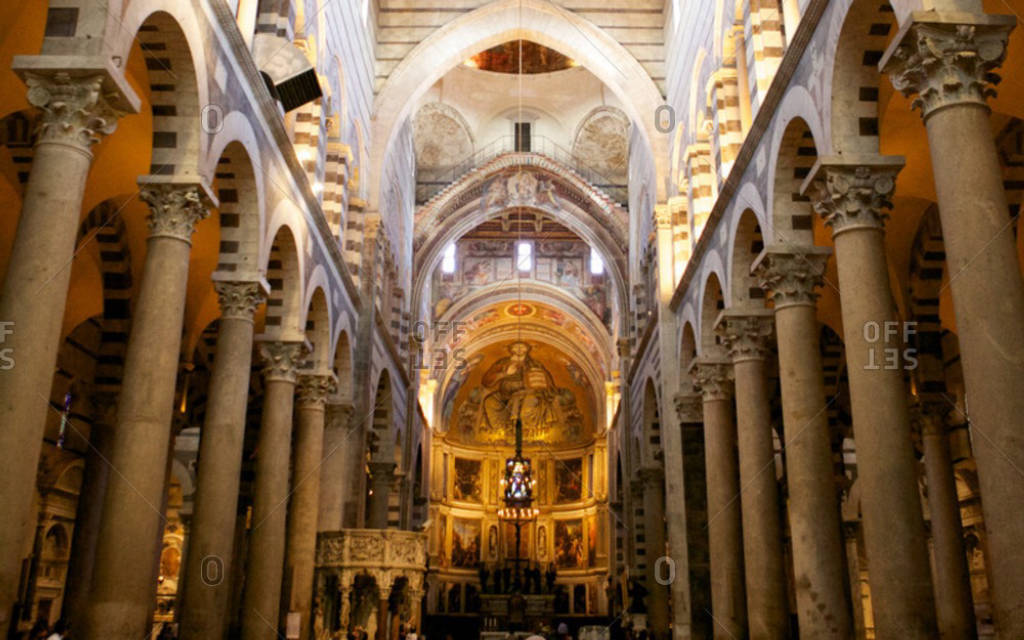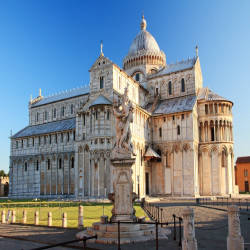Started in 1063 by the architect Buscheto, the Cathedral exhibits a diversity of styles: classical, Lombard-Emilian, Byzantine and Islamic, proof of the cosmopolitanness of the city's merchants. at the time.
The church was erected in an area outside the city walls to demonstrate that the Pisa power did not need any special protection. The church, consecrated in 1118 by Pope Gelasius II, was enlarged in the first half of the 12th century under the direction of the architect Rainaldo, who devised the present stone facade. gray and white marble, decorated with splashes of color. Three doorways are found beneath four orders of loggia divided by cornices inlaid with marble, behind which single, double and three-piece windows are opened. The door of San Ranieri is decorated with 24 panels depicting stories from the New Testament.
The building style is the result of major restorations at different points in history. The biggest renovation was after a terrible fire in 1595, after which the roof was redone and three bronze doors were made for the façade. Other work included the dismantling of Giovanni Pisano's pulpit, which was rebuilt in late 1926 in a different location. Subsequent renovations took place in the 19th century, involving the interior and exterior decoration, often replaced by replicas. The building - like the tower of Pisa is also sinking to the ground due to geological instability.
According to the original plan a Greek cross (now a Latin cross) with a large dome was built and divided into five parts with passageways and windows. The striking effect of the architectural spaces is reminiscent of great mosques thanks to the use of raised circular arches interspersed with bands of black and white marble. The pointed arches allude to the Muslim influence of Southern Italy. Blind domes with rhombuses are similar to Armenian churches. The interior is covered in white and black marble with gray marble monolithic columns and Corinthian capitals.
Giovanni Pisano's pulpit (1302-10), due to its intricate architectural and sculptural decoration, is one of the greatest stories in 14th-century imagery. Its curved panels tell stories. stories from the life of Christ. It is considered the artist's masterpiece, as is in the entirety of Italian Gothic sculpture. 27 full-coverage paintings behind the main altar - depicting as an episode from the Old Testament and stories of Christ - were created between the 16th and 17th centuries by some of the leading Tuscan artists, including Andrea del Sarto, il Sodoma and Domenico Beccafumi.
Opening hours: Daily
December 25 - January 7: 9:00 to 18:00
November to February: 10:00 to 13:00 / 14:00 to 7:00
March 1 - March 13: 10:00 to 18:00
March 14 - March 20: 10:00 to 19:00
March 21 - September 30: 10:00 to 20:00
October: 10:00 to 19:00
Ticket price: €2/person
 Register
RegisterSign in Travel Agent
Sign in Supplier
Sign in Affiliate
Sign in Guru





 Piazza del Duomo, 56126 Pisa PI, Italy
Piazza del Duomo, 56126 Pisa PI, Italy